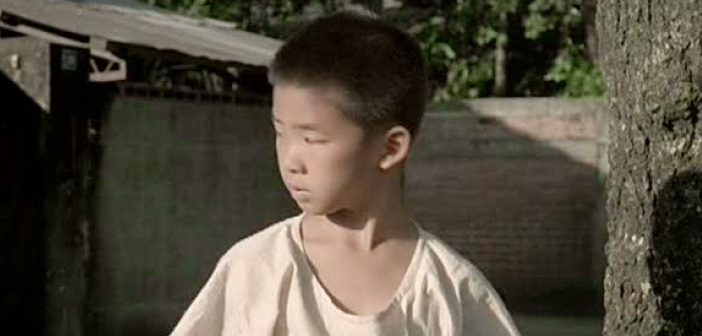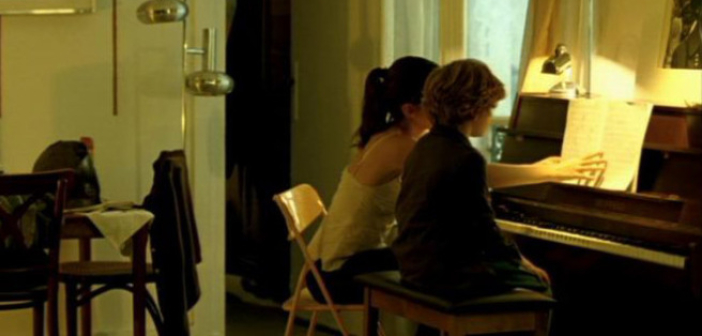Hou Hsiao Hsien | An Interview with the Cannes Winning Director on Storytelling, Cinema and Taiwan
Winner of the Best Director at Cannes, winner of the Golden Lion at the Venice Film Festival, nominated for the Palme D’Or at Cannes on 7 separate occasions, Hou Hsiao Hsien is one of the most accomplished and highly regarded film makers of the past 35 years. From his instrumental role in the emergence of Taiwanese New Wave Cinema in the 1980s, his films have touched upon the humanity of life in Taiwan, the relationships, the politics, the personal journey of his characters and the personal introspection of art and film.
Starting on Thursday evening, the IFI are hosting the inaugural Chinese-language Film Festival and Hou Hsiao Hsien is in Dublin to attend a number of screenings and deliver a masterclass in film making, along with long time collaborator and screenwriter Chu T’ien-wen. I sat down with Hou to talk everything from modern cinema to how his style of film making has made him one of the most important directors working today.
Born in Guangdong Province, Hou fled to Taiwan as an infant with his family to escape civil war in China. After Hou dropped out of high school, he completed his mandatory military training, and ran away from his family to Taiwan’s capital city of Taipei. His love for film started from an early age, “When I was a young boy watching Western films or horror films, I would not understand the language but I would always get something from the film. I distinctly remember watching Frankenstein with my brother and being awake all night as we were too afraid to sleep.” Upon the completion of his military service, he pursued his love for film and drew inspiration from the New Wave directors in Europe such as Godard and Truffaut, but it was Federico Fellini’s Amarcord which drew him in, “Fellini and his film Amarcord are really important to me. I like his form of expression throughout and when I make my own films I naturally gravitate towards these styles.” The influence of Japanese cinema on Hou was also important, “Film makers such as Yasujiro Ozu and Mikio Naruse were huge inspirations.”

By the early 1980s Hou began making what would become seminal Taiwanese New Wave films including The Boys from Fengkuei (which will be screened in the IFI on Saturday May 13th) and A Time to Live, a Time to Die (screening Friday May 12th), a semi-autobiographical reflection on his childhood and adolescence. He won the International Critics’ Prize Award at Berlin for this work and I asked him if he is looking forward to seeing this film back on the big screen, “A Time To Live, a Time to Die was a time when I was very young, and my perspective on how I saw myself was not so finely tuned.”
Hou’s personal introspection in his early work was overtaken by an urge to analyse the turbulent political and societal issues of Taiwan and in 1989 he released A City of Sadness (screening Sunday 14th May), the study of the complex lives of four brothers rooted in a haunting period of 20th century Taiwan history. It won the Golden Lion at the Venice Film Festival and established Hou as a distinct voice and storyteller. “I would like to see City of Sadness again because at the time the information we had about that period in the history of Taiwan was very limited. Since the film was released there has been decades of new information released and there is so much richness in this contemporary history. There is a lot of new information that I have been thinking about, and maybe I am considering making another story of this history. It is such a rich story, full of information, and there are many more stories to tell.” He would follow up on these themes with The Puppetmaster in 1993, the first of seven of his films nominated for the Palme D’Or at Cannes.

By this time Hou had developed his own style of film making, and was noted for his long single shot takes and rare use of close-ups, rather maintaining an objective distance to his subjects. “I feel that directors use close-ups as detail, they want to clearly express something but these long shots have a temporal and spacial element to them where the action of the characters in that scene will be prolonged. The theatrics and drama of other types of filmmaking is created, its intentionally created whereas in my films the actions of the characters and their characterisation is revealed by the actions within these shots.” I asked him about a truly fantastic scene in his 2007 film The Flight of the Red Balloon involving a 7 minute single shot take featuring a piano tuner and wondered why mainstream cinema does not have the courage to shoot film in this way, “In this internet age a lot of audiences do not watch films in the cinema, they watch it on the internet and they just watch whatever they want to watch. They do not have the patience for the things that require them to pay attention and they want something that can capture their interest right away. Whether or not it takes courage, I think this is the only way that I want to make this film, I am not interested in anything less.”
Hou’s influence on modern cinema is evident in the work of many leading directors today including Jim Jarmusch, who described Hou as his “teacher”, and Oliver Assayas who made a feature length documentary on Hou called HHH: A Portrait of Hou Hsiao Hsien. I asked Hou about what he hopes the next generation of film makers will take away from his body of work, “When young people make films today, they are trying to make films that emulate what they have already seen but they really need to examine their own life and observe the real world and remember the details of growing up, the whole process of life. They can start making films really young these days because the cost has become so low compared to when I began, so it is so much more important that the narrative is essential, observational and not just examples of technology.”
So why is Hou’s unique vision and body of work so well regarded? “What film captures is the world of humans, the human condition, and to capture the changes in their emotion, their conflicts and the obstacles they face. How you understand it depends on your own perspective. What motivated me to make films was how I saw these obstacles. Everybody grows up, everybody has their own life and experiences, but what sets someone apart is the ability to observe it from a distance. Then, you can really see yourself. You might begin by watching others and then reflecting on your similarities and you can eventually really see yourself as an outsider. Your expression will then be unique. You can observe the things that happen around you with your own perspective which is not like any one else’s.”
The Chinese-language Film Festival will kick off on Thursday the 11th May at 6pm with a screening of Hou Hsiao Hsien’s The Assassin, the film which won him the Best Director Award at the 2015 Cannes Film Festival and a BAFTA nomination for Best Foreign Language Film. The wuxia inspired masterpiece set in 9th-century China during the last years of the Tang Dynasty is a masterpiece of visual poetry and observational meditations. The screening will be followed by a Q&A with Hou and screenwriter Chu T’ien-wen.
Check out the IFI page with all the details of the weekend’s screenings including a master-class with Hou Hsiao Hsien at midday on Saturday.
INAUGURAL CHINESE-FILM FESTIVAL, MADE IN TAIWAN
RUNS MAY 11TH – 14TH
Cover Photo Credit – Peter H. Morris

